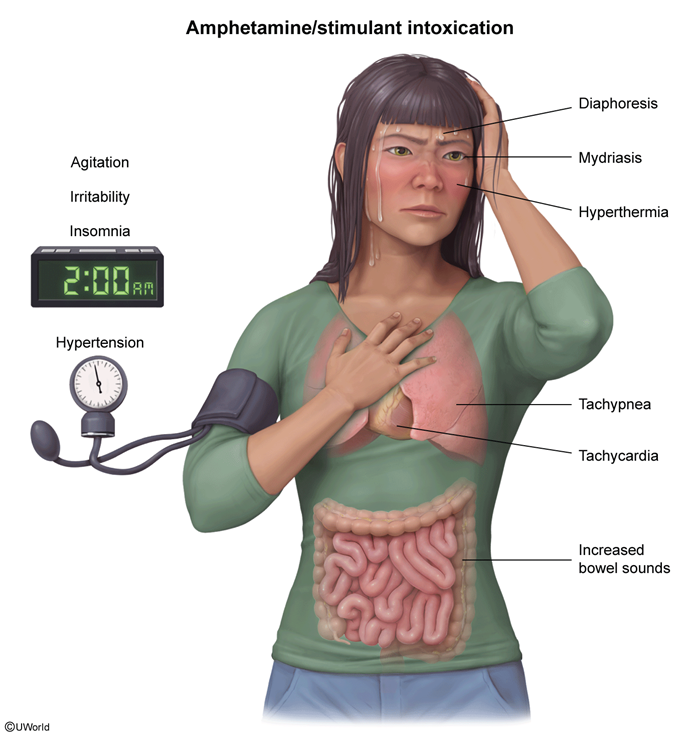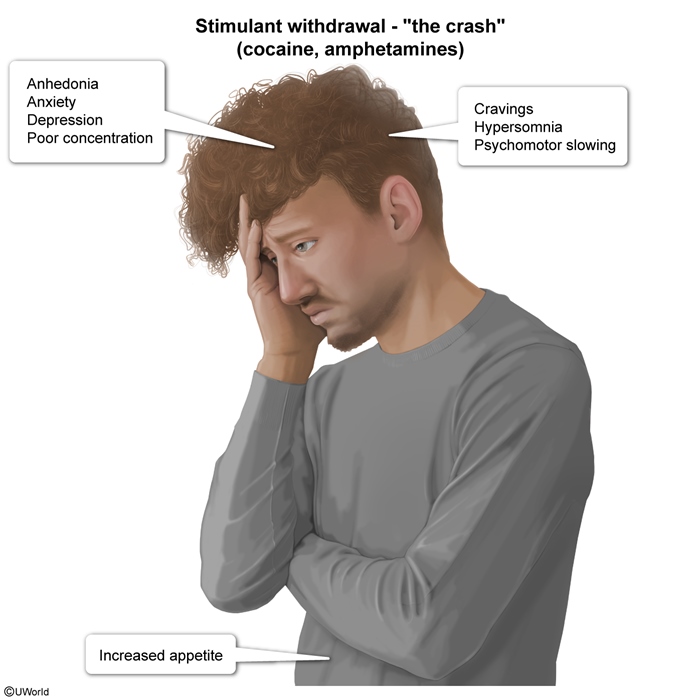Stimulant Use Disorder
Article Sections
Introduction
Stimulant use disorder (SUD) refers to the misuse of cocaine and amphetamine-type substances (eg, methamphetamine, prescription medications [eg, dextroamphetamine], synthetic cathinones [eg, "bath salts"]). This article focuses on amphetamine-type substance use, intoxication, and withdrawal.
Epidemiology and risk factors
Stimulants are the second most misused drugs worldwide. Up to 2% of the population has misused stimulants, with similar rates among men and women. Concomitant use of heroin or fentanyl (ie, "speedballing") has contributed to stimulant-related deaths.
Several factors increase the risk of developing SUD, including a family history of substance use disorders, prenatal stimulant exposure, adverse childhood experiences (eg, parental use, community violence), economic uncertainty, co-occurring substance use, mood, and psychotic disorders, and attention deficit hyperactivity disorder.
Pathogenesis
Stimulants increase levels of monoamine neurotransmitters, primarily dopamine and norepinephrine, which increases monoamine release from presynaptic vesicles and inhibits monoamine reuptake transporters and monoamine degradation. Increases in synaptic monoamine concentration lead to intoxication, and the subsequent depletion leads to withdrawal. Stimulant effects on dopamine in the mesolimbic pathway result in the perception of reward and reinforce use. Abrupt onset of intoxication followed by quick offset leads to increasingly compulsive drug use and more severe stimulant disorders.
Continue Learning with UWorld
Get the full Stimulant Use Disorder article plus rich visuals, real-world cases, and in-depth insights from medical experts, all available through the UWorld Medical Library.
Figures

